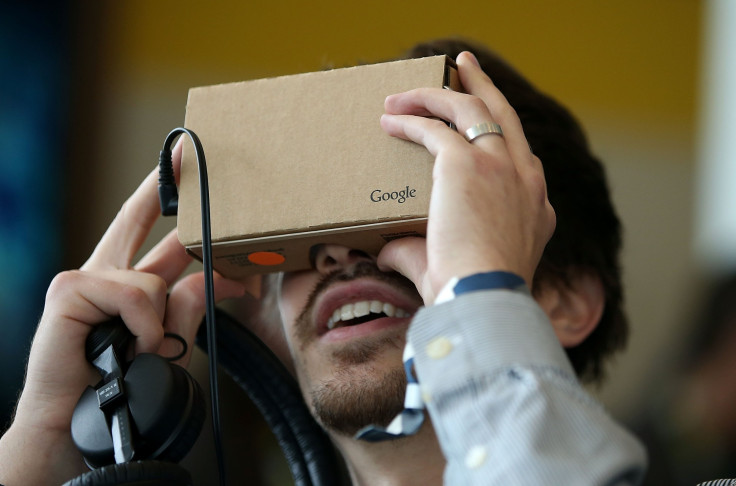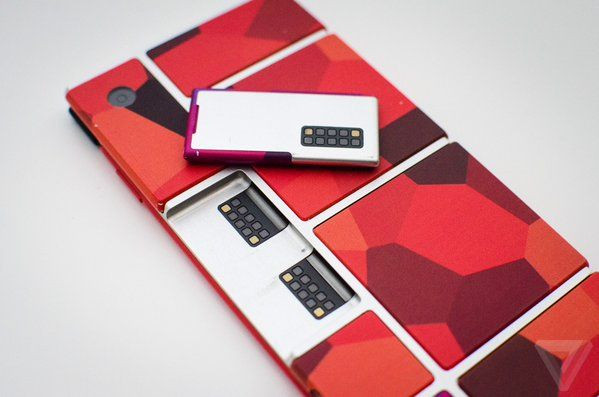Google I/O 2016 Preview: Android VR, Project Tango, Android N, Chrome OS, Self-Driving Cars And More

What's Google up to? We'll find out this week what the tech giant is planning and how virtual and augmented reality factor into its goal to remain the world's most valuable company, as well as updates on the world's most popular operating system, Android, and possibly details on a return to China.
On Wednesday, Google CEO Sundar Pichai will take the stage at the Shoreline Amphitheatre — a 15-minute walk from his office at Google’s Mountain View, California, headquarters — and deliver an update on the company's current and coming projects.
Nominally a conference for developers, Google I/O is really a way of keeping everyone updated on what it is working on, to help give products that are underperforming a promotional push and to remain in the public eye about other projects that may have slipped from the public memory due to being in development so long.
Last year, it was all about a big update to Android; the previous year Google pushed Android TV and Android Wear; in 2013 it was the launch of Google Music; and 2012 saw a team of skydivers drop onto the Moscone Center stage in San Francisco during the keynote, shooting their exploits on Google Glass and live streaming it to an awestruck audience.
This year, while we will hear about Android, Chrome OS, driverless cars and Project Ara, the big focus will be on the tech world’s hot topic: virtual reality.
Android VR
Google is widely expected to launch a standalone VR headset at Google I/O this year, a significant update to its Cardboard headset, which is a low-tech solution that uses a smartphone’s screen, processor and sensors to generate content and view it.
The new headset — which has been confirmed by various sources, including the Financial Times — is believed to be operable without being tethered to a smartphone or PC. While VR is still very much in its infancy as a consumer product, there is a lot of interest in it. But for many people, accessing a VR headset is not that easy.
High-end VR headsets like Facebook’s Oculus Rift and HTC’s Vive are not only expensive, they also require users to have a pretty powerful PC to run them on. At the other end of the scale, Samsung’s Gear VR may be relatively inexpensive at $99, but only those who own one of Samsung’s expensive flagship smartphones can use it.
Google could, therefore, be perfectly positioned to launch a headset that offers many more features than Samsung’s Gear VR while being a lot cheaper than the Rift or Vive.

The importance of VR at this year's conference will be laid out in full at a session called "VR at Google," which takes place Thursday. It will concern “what we have built, what we have learned, and where we are headed,” the program says.
Part of that session is likely to focus on Android VR, a new part of the Android ecosystem dedicated to virtual reality. The new platform was leaked a little early to those signing into the Google Play Developer Console over the weekend, with the Android VR section sitting alongside Android TV and Android Auto.
Google clearly wants to make sure it is not left behind in virtual reality and will be telling its audience that Android is the platform to develop virtual reality apps and content.
Project Tango
Another line of Google’s push into the world of virtual and augmented reality is Project Tango, a experimental technology that uses sensors and cameras embedded in smartphones and tablets to created highly detailed maps of the 3D environment. Google is essentially attempting to create a Google Maps for indoor spaces.
Last year's Google I/O had a single session on Tango development, but this week there will be four, and we could see the first commercially available Tango smartphone (being built with Lenovo and Intel) on stage during Wednesday’s two-hour keynote.
According to a report from Bloomberg last week, Google is working on making it easier to share the 3D maps, which could provide a huge opportunity for developers and Google itself. Google wants to make this ability ubiquitous so that developers will be enticed to create virtual reality and augmented reality apps based on real environments — all of which of can be used on Google’s new VR headset.
Android N
In March, Google took the unusual step of launching its latest Android update as a developer preview, having typically done this at I/O in recent years. The reason is to give manufacturers more time to tweak the software to run on their smartphones, in a bid to fix the upgrade problem Google has with its mobile operating system.
The OS update promises a number of significant upgrades, including a split-screen view, an updated notification shade and the ability to better control the amount of data used.
At I/O this week, Google is likely to go into more detail about the new software, as well as a fresh version of the Developer Preview. Google could also reveal what sweet name it will give Android N, with some suggestions including Nutella, Nougat or Nectar.
Androme or Chrodroid?
In addition to updates on Android, Google will certainly talk about Chrome OS, and there has been a lot of speculation that the company’s two software strands could move a lot closer together.
Folding Chrome OS into Android (or vice versa) seems to make a lot of sense, and while there is already some overlap, the two software systems essentially live on their own.
In March, ArsTechnica unearthed code buried within Android N Developer Preview that includes a “freeform” mode that would let users change the size of application windows and move them about the screen, just as they would while using Apple's Mac OS X or Microsoft's Windows.
It is also reported that Google will launch a version of the Play Store, and therefore access to more than a million Android apps, on Chrome OS, allowing people using the desktop software to access all the apps and games that smartphone and tablets users do.
There have been so many reports of a software merger — from sources speaking separately to the Wall Street Journal, Re/code and TechCrunch — that Google must be at least considering it, and given the evidence in Android N, the company could be ready to announce it.
Google in China
Another rumored move by Google is the relaunch of its services in China, having pulled out of the country five years ago over the government's demand to censor search results. In November, Reuters quoted sources within Google as saying the company hoped to launch a Chinese version of the Play Store in 2016.
While Android is the biggest smartphone operating system in China — the world’s biggest smartphone market — Google doesn’t make any money from it, as its services — search, maps, app store — are almost completely blocked there.
Google last year partnered with Chinese company Huawei to make its flagship Nexus 6P smartphone in a move seen by many as a way of helping ease tensions between Beijing and Mountain View.
What Else?
Google’s self-driving car project is so big at this point that it is only a matter of time before it is spun out of Google into its own company under the Alphabet umbrella (and indeed the announcement could come at this Google I/O), but for now, it is still a division of Google, so expect some updates.
The company most recently signed its first deal with a traditional automaker, when it agreed to fit 100 Chrysler minivans with self-driving technology.

Project Ara is the hugely hyped modular smartphone project that remained from Google’s acquisition and subsequent sell-off of Motorola. Last year Google carried out a demonstration of how a smartphone without a camera could quickly and easily gain a camera. Expect Google to at least mention Ara again this year as it seeks to keep interest in this project, though any announcement about release dates or prices may not happen.
Finally, harking back to that 2012 skydiving stunt filmed on Google Glass, the company could finally announce some details of Google Glass 2.0, or Project Aura as it is known inside the company.
Aura is now under the domain of Google’s new hardware chief, Rick Osterloh, and is apparently focused on enterprise applications, specifically manufacturing and healthcare. If Google learned anything from the mistakes it made with the original, it won’t be pitching the second-generation device as a mass market product, but managing expectations when it announces any details about the headset.
© Copyright IBTimes 2024. All rights reserved.






















